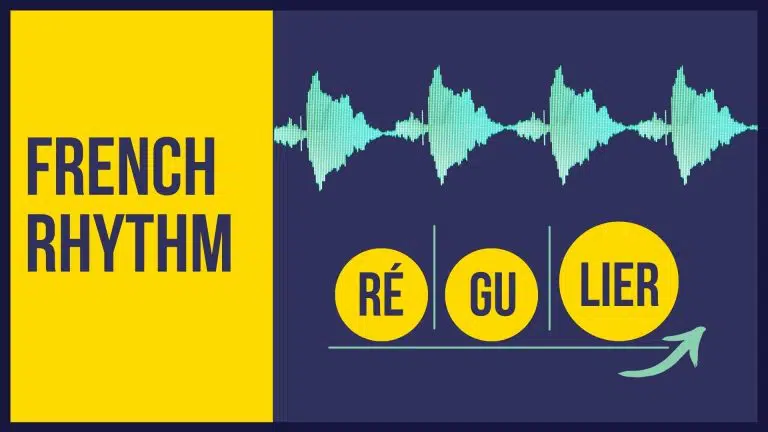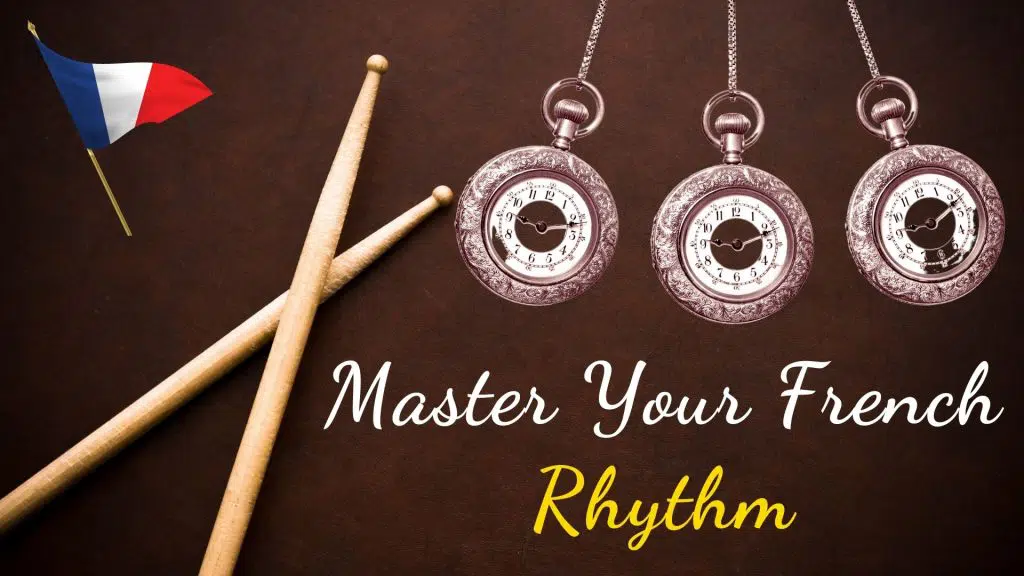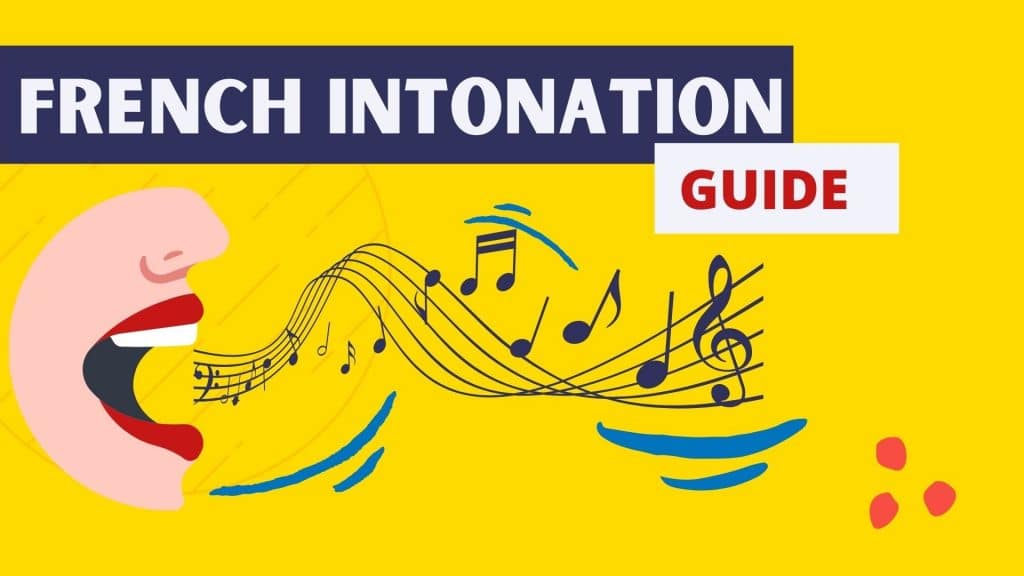The rhythm of the French language
Updated: 30 January, 2022 by Mylene in Pronunciation Lessons ▪

Rhythm refers to the way a language is organized in time. Different languages have different rhythmic organizations. According to many studies, languages such as French, English, and Italian feature very different rhythmic organizations.
The way people speak, how they stress time, and syllables can often reveal a lot about the language they are speaking. Even if you don’t speak the language, it’s easy to discern the language when listening to people speaking French, Italian, or English.
Rhythm in song lyrics is vital. Combined with intonation, rhythm can also boost language learning skills. Do you want to sound more French when you speak? You have to develop a French cadence!
Now that you know that language specificity and rhythmic structure go hand in hand, this article will provide the following elements to help you learn and apply the rhythm of real spoken French:
- The French rhythm
- French group stress
- Rhythmic group
- Video to learn the French rhythm
- Exercise: improve your rhythm
What’s rhythm?
Rhythm is the movement, perceptible on hearing or reading, which is given to a sentence or to an entire text. It results from the arrangement and duration of the different groups of words and the distribution of sonorities and accents. In French, the rhythm is syllabic, and each syllable has the same duration.
About the French rhythm
The French language is widely acknowledged to be one of the most beautiful spoken languages. Its pronunciation is pleasing to the hearers, its intonation is melodious, its musicality is aesthetically pleasing, and its rhythm is unique, charming, and elegant.
Phonetically speaking, we can say that in French words don’t exist. French is a syllable-timed language. That means that all syllables in the spoken language take up approximately the same amount of time.
Syllabic breakdown is very important to have the right accent. In French, 80% of syllables end in a vowel.
For example:
- Je vais partir is pronounced like ta ta ta ta
The liaison
French words flow one word into another thanks to liaisons in French and enchaînement. A liaison occurs when the final consonant of one word may belong phonetically to the first syllable of the second word. The liaison can be obligatory, optional, or forbidden.
Example:
- ils ont pris is pronounced il-zont-pris : ta ta ta (3 syllables). The letter -s is pronounced /z/.
Enchaînement
An “enchaînement” occurs when the final consonant or the final vowel of one word may belong phonetically to the first vowel of the second word.
Example:
- Elle appelle Marc is pronounced e-lla-ppelle-marc like ta ta ta ta (4 syllables). The letter -e is not pronounced at the end of a word. You can pronounce an enchaînement between the consonant -l and the vowel a. “Elle appelle” is pronounced : e-lla-ppelle”.
A syllable-timed language
Syllables in different languages can be variously stressed and unstressed. In French, each syllable takes up approximately the same amount of time. Note that in the previous examples only the last syllable is stressed.

French group stress
Stress patterns occur in everyday spoken French, not merely in verse and poetry. French has very predictable stress: it’s mostly on the last syllable of the group of words.
Example:
- un petit vélo (the last /o/ sound is stressed).
- un petit vélo bleu (the last /ø/ sound is stressed).
What is a rhythmic group in French?
A rhythmic group is a group of words pronounced in a single breath, and it often corresponds to one idea. The basic phonetic sounds in French are useful for many purposes. They aren’t for the words but the rhythmic groups.
A rhythmic group has the following characteristics:
- corresponds to one or more sense group (have one idea)
- words can never be split
- are quite short: 3 or 4 syllables. Each group has up to 7 syllables which form a unit of meaning.
Note that each group can have up to 7 syllables, but this varies according to how quickly they are being spoken. If a sentence is spoken very quickly, some of the shorter rhythmic groups may be joined. For example:
- One rythmic group: Tu viens avec moi? is short enough that you might choose to pronounce it as a single rhythmic group.
- Two rythmic groups: Tu viens | avec moi? All our syllables have the same length, we don’t have a much longer syllable or acceleration within a word.
Below I give you a list of some general categories for identifying rhythmic groups in French:
- nominal group: les petits enfants
- verbal group: veulent aller jouer
- prepositional group: dans le jardin
Watch the video to improve your rhythm
Watch this video lesson that summarizes all the elements listed in this article. You’ll also hear the rhythm of spoken French with real sentences and examples.
How to learn the French rhythm?
It is much easier to learn elements that are relatively easy to define, for example French vowel and consonant sounds. In many cases, learning the right rhythm seems to be an afterthought.
Taking private French lessons is a great way to address students’ “deafness” to the melody of a foreign language. You need to practice intensively the newly-learned articulatory patterns in order to develop a “feel” for them and to be able to produce these sounds in the long term.
Try to pronounce the following sentences with equal syllables:
Exercises to practice
- Tu pars: ta ta (2 syllables).
- Tu pars à Paris: ta ta ta ta ta (5 syllables).
You just need to add the intonation to sound more natural.
- Declarative statement: Tu pars à Paris.
- Question: Tu pars à Paris?



These are great, thank you!
Bonjour Tony, je vous remercie pour votre message ! Je suis contente de savoir que vous avez apprécié cet article ! A bientôt ! Mylène
Thanks! Now I understand why it is so difficult to explain the stress rules in Spanish to the French.
Note that in:
One rythmic group: Tu viens avec moi? is short enough that you might choose to pronounce it as a single rhythmic group.
Two rythmic groups: Tu viens | avec moi? All our syllables have the same length, we don’t have a much longer syllable or acceleration within a word.
The audio icons are confusing.
Bonjour Martin, je vous remercie pour votre message et vos remarques ! Effectivement le rythme n’est pas simple à maîtriser ! A bientôt.
Hi,
Thanks for the excellent material.
The videos on rhythm and intonation aren’t working- do you have another link?
BW,
Gary
Hello Garry,
Thank you for your great feedback. I just updated the video links. Now you should be able to play the French intonation and rhythm videos. A last note, you can find these videos on Master Your French’s YouTube channel. Here’s the link.
Best regards,
Mylène